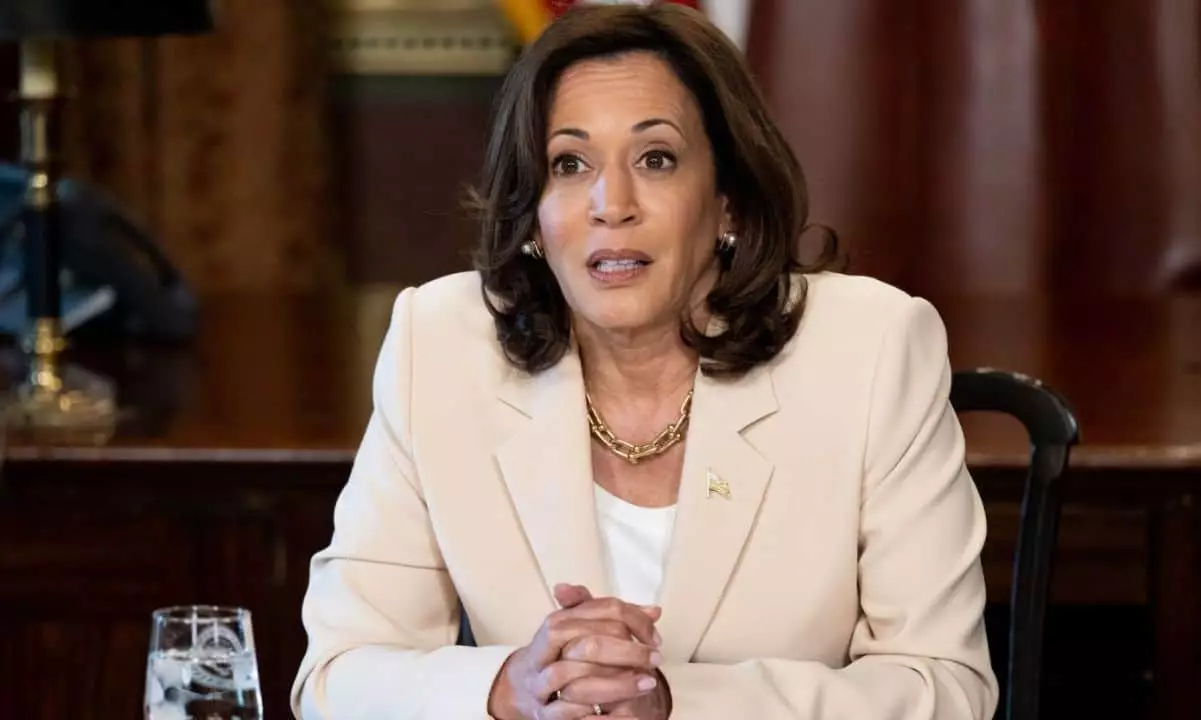The current landscape of digital assets in the United States is one of uncertainty and contention, with figures like U.S. Vice President Kamala Harris stepping into the fray. Harris recently made headlines by asserting her commitment to developing digital asset policies that specifically support crypto investors, with a notable focus on Black men. This promise unfolds within a broader agenda tailored to appeal to men of color, a demographic that the Democratic campaign believes could significantly influence the upcoming presidential elections. However, while Harris emphasizes empowering underrepresented groups, the vagueness of her proposals raises critical questions about efficacy and sincerity.
In her October 14 announcement, Harris highlighted a noteworthy statistic: 20% of Black Americans either own or have previously owned cryptocurrency. This is an important metric, illustrating not only the growing interest among marginalized communities in alternative financial opportunities but also their previous exclusion from conventional banking services. Harris characterized digital assets as “new technologies” that can potentially enhance access to affordable financial products.
While promoting the promise of digital finance, it is vital to examine the socio-economic contexts that necessitate such access. Historical disenfranchisement has left many Black individuals wary of traditional banking, making the shift toward cryptocurrencies particularly significant. However, the call for regulatory frameworks that purportedly cater to these communities requires substantial elaboration and, importantly, actionable strategies. Without such clarity, it risks being merely a symbolic gesture rather than a systemic change.
A critical point of discussion arises from the generality of Harris’s announced intentions. Advocating for a supportive regulatory framework is commendable, but the absence of details regarding what this framework would entail poses challenges. Throughout her public engagements, including a speech in Erie, Pennsylvania, Harris failed to delve into specific concepts such as “blockchain” or “digital assets,” leaving many scrutinizing the authenticity of her commitment. Critics argue that such omissions represent a lack of genuine understanding of the very industry she aims to support, raising doubts about her grasp of the intricacies of crypto regulation.
Moreover, Harris’s cryptic stance has drawn comparisons to former President Donald Trump’s more concrete, albeit controversial, embrace of cryptocurrencies. Trump has transitioned from a skeptic to a self-proclaimed “Crypto President,” enthusiastically promising a welcoming regulatory environment and even proposing the formation of a Bitcoin advisory council. In light of these clear declarations, Harris’s unsubstantiated pledges may seem particularly lackluster.
The undercurrents of political rivalry come to the forefront as Trump positions himself as an advocate for the crypto community. Despite historical criticisms aimed at Trump regarding his attitudes toward various demographics, his renewed engagement with the digital asset sector appears to resonate with some. Trump’s activities, such as visiting establishments that accept crypto and launching new ventures in decentralized finance, showcase a stark contrast to Harris’s ambiguous policymaking approach.
Amidst these contrasting strategies, Harris’s campaign team has been swift to dismiss Trump’s efforts, accusing him of harboring contempt for Black Americans. However, the reality remains that perception often outweighs rhetoric in electoral politics. For Harris to make significant inroads with Black male voters, her campaign must not only articulate a coherent vision for digital asset regulation but also demonstrate a tangible commitment to addressing systemic barriers that make such regulation necessary.
As the 2024 presidential election approaches, candidates are under increasing pressure to engage with the digital asset community genuinely. Harris’s campaign has the potential to resonate with a critical demographic, but it hinges on clarity and authenticity in her proposed policies. The goals of supporting underrepresented groups and fostering a thriving cryptocurrency sector align, but only if translated from abstract support into actionable plans.
Harris’s pledge carries weight in its intent, particularly when focusing on digitizing financial access for marginalized communities. However, the ultimate success of her campaign’s agenda lies in its ability to navigate the complexities of digital asset regulation with specificity, integrity, and a genuine understanding of the audience it aims to serve. As the battle for voters’ hearts and minds heats up, clarity and intentionality will be paramount for any candidate wishing to leave a lasting impact.
















Leave a Reply